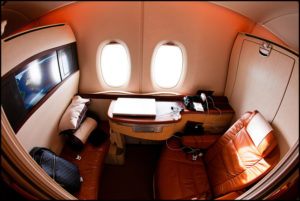 Since last year, I’ve been fascinated by the wonderful world of travel hacking.
Since last year, I’ve been fascinated by the wonderful world of travel hacking.
I’m still a novice at this game, but after doing some research and optimising our spending this year, it paid off: My wife and I used the miles we earned to redeem a ticket on the fabled Singapore Airlines Suites – something we’ve never flown before – for our honeymoon in Europe next year.
The cost? A mere $280.60 for the taxes and fees:
That same ticket would have cost us over $8,500 (one way) if we had paid for it in cash:
If you know how to play the mileage game, it can be worth thousands of dollars to you every year. However, the barrage of deals, jargon and T&Cs can also get pretty complex. How do you figure out which are truly worthwhile, and which are a waste of your time and money?
So I decided to write a 2-part post on a simple strategy I use to evaluate mileage deals. This week, we’ll focus on burning miles, and next week, we’ll cover how to earn them more efficiently.
Getting The Most Bang For Your (Mileage) Buck
Think of miles like money – you want to spend it on something that gives you the most bang for your buck. The $1 in your pocket may buy a refreshing bottle of Coke at NTUC, but that same $1 can’t even get you water at Universal Studios.
In the same way, you’ll want to spend your miles on something that gets you the most value.
So let’s say you had a bunch of miles in your KrisFlyer account, or a bunch of credit card points that you’re looking to redeem – what’s the best way to spend them?
There are 3 steps to figuring this out:
- Find out how many miles you need
- Find out the base fare
- Calculate the value-per-mile
Step 1: Find out how many miles you need
Let’s say that you’re trying to decide between Bangkok, Sydney or London for your holiday next year. How many miles would it cost you to redeem a free ticket? Which destination should you choose?
To figure this out, first download the SIA Award Chart. It lays out how many miles you need to redeem a free SIA/SilkAir ticket between different destinations. It’s too big to display here in full, but here’s what part of it looks like:
(Download the full chart here)
This chart may look scary, but it’s not as complicated as you think. The different colours represent the different classes: Green = Economy, Yellow = Premium Economy, Blue = Business, Red = Suites / First Class.
SIA divides up its destinations into different zones, and the numbers represent how many miles (in thousands) it takes to fly one-way between zones. For example:
- Singapore (Zone 1) to Bangkok (Zone 3) on Business Class will cost you 20,000 miles each way.
- Singapore (Zone 1) to Sydney (Zone 9) on Suites will cost 75,000 miles each way, and so on.
However, SIA also gives you a 15% discount if you redeem your trips online. So the equivalent Singapore-Bangkok Business Class ticket will only cost you 17,000 miles, while a Singapore-Sydney Suites ticket will cost you 63,750 miles.
Let’s take 3 destinations: Bangkok, Sydney and London, and compare how many miles it takes to do a round-trip (just multiply the one-way mileage costs by 2), after the 15% online redemption discount:
| RT mileage cost | Economy Class | Premium Economy | Business Class | Suites/First Class |
| Singapore-Bangkok | 21,250 | N/A | 34,000 | N/A |
| Singapore-Sydney | 42,500 | 76,500 | 93,500 | 127,500 |
| Singapore-London | 59,500 | 106,250 | 136,000 | 182,750 |
Step 2: Find out the base fare
Next, let’s figure out how much the trip would cost us if we had paid for it in cash. To do this, do a few quick searches on singaporeair.com.
Instead of comparing the full fare, you’ll want to compare only the base fare (which excludes taxes and surcharges). That’s because your miles only cover the base fare of the ticket – you’ll still have to pay for the taxes and surcharges in cash.
Here’re the base fares of our 3 trips, departing on 1 Sep 2017 and returning on 10 Sep 2017:
| RT dollar value | Economy Class | Premium Economy | Business Class | Suites/First Class |
| Singapore-Bangkok | $310 | N/A | $1,200 | N/A |
| Singapore-Sydney | $630 | $810 | $4,500 | $7,850 |
| Singapore-London | $1,125 | $1,805 | $6,450 | $13,650 |
Notice something interesting here: When you book early (say, 6 months to a year in advance), you can often get pretty attractive fares on Economy Class – even on Singapore Airlines. For example, the base fare for a round trip to Bangkok SIN-BKK is only $310, which is pretty reasonable considering the stuff you get: Movies, food, baggage allowance, etc.
Now that you know the cost of each trip on different classes, it’s time to figure out where’s the best place to spend your miles.
Step 3: Calculate the value per mile
To figure out how much value you’re getting from your miles, you’ll need to use a metric known as value per mile (VPM). It tells you how much value (in cents) you’re getting back for every mile you “spend”.
To calculate this, simply divide the base fare by the number of miles for each trip (i.e. take the numbers in the second table and divide them by the first):
| Value per mile | Economy Class | Premium Economy | Business Class | Suites/First Class |
| Singapore-Bangkok | $0.01 | N/A | $0.04 | N/A |
| Singapore-Tokyo | $0.01 | $0.01 | $0.05 | $0.06 |
| Singapore-London | $0.02 | $0.02 | $0.05 | $0.07 |
For example, if you redeem your miles for a round-trip to Bangkok, you’re only getting back 1 cent in value per mile. This isn’t surprising: You’re spending 21,250 miles and getting back just $310 in value.
Conversely, spending 182,750 miles for a round-trip Suites ticket to London might seem like a lot, but you’re actually getting back a $13,650 value – or 7 cents for every mile you spend. That’s 7X the value of the Singapore-Bangkok VPM!
In a nutshell, the value-per-mile metric is an indication of how effectively you’re using your miles. If you’re getting a low VPM, you might not be spending your miles so effectively.
Here are the approximate value-per-mile rates for the different classes of travel:
- Economy/Premium Economy: 1-2 cents per mile
- Business Class: 4-6 cents per mile
- Suites/First Class: 6-9 cents per mile
How Are You Spending Your Miles?
In general, redeeming your miles for a long-haul trip is better than redeeming them for a short-haul trip. Redeeming miles for a First Class ticket is more worth it than redeeming them for an Economy Class ticket.
This is counterintuitive for many people. Most people would assume that they should automatically go for the cheaper option and redeem an Economy Class ticket. But if they’d looked at their VPM, they’d realise that they’re actually not getting a lot of value out of their miles.
Think about it: You’d rather spend $310 on a Singapore-Bangkok Economy Class ticket, and save your miles to redeem a more expensive Business Class ticket to London – something that you probably wouldn’t normally spend cash on.
Just like when it comes to money, smart people don’t always spend on the cheapest option. Instead, they spend it on something that gives them the most VALUE.
Next week, I talk about how to figure out which deals can help you earn you miles more effectively, and which ones are simply B.S.
Image credits: s.yume
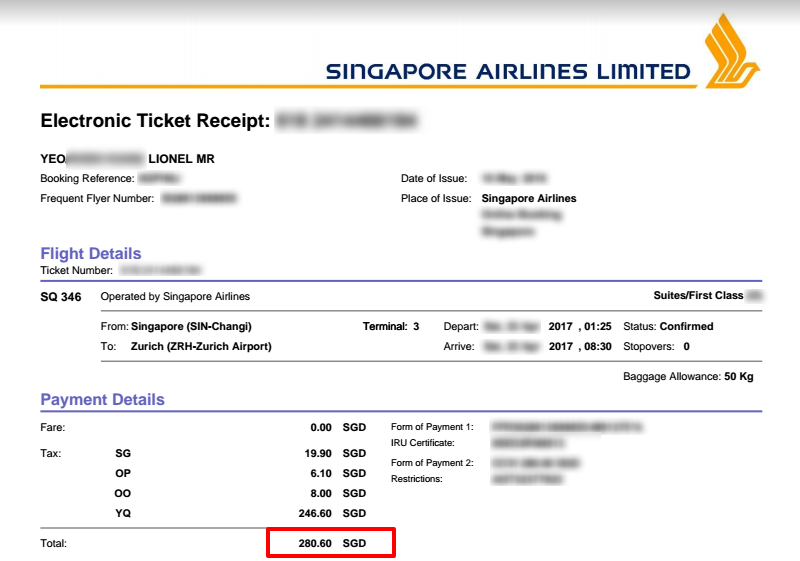
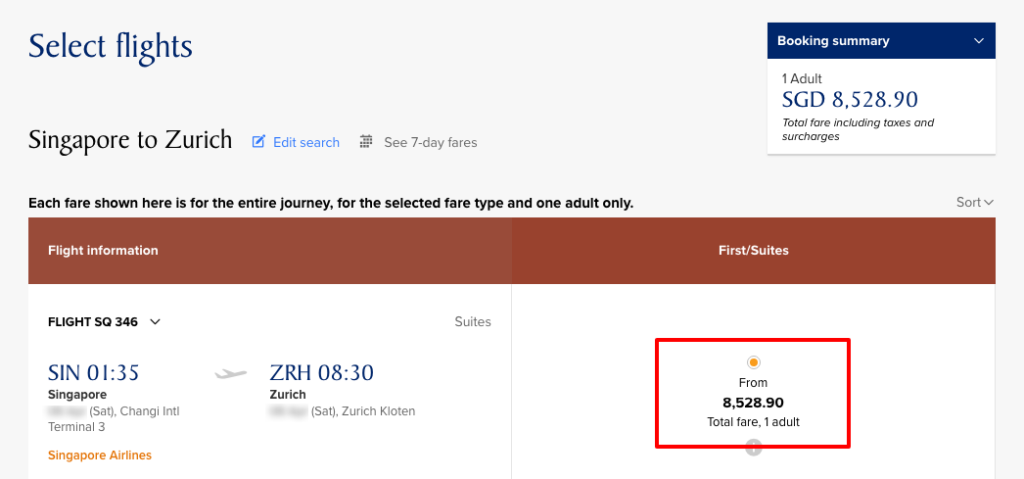
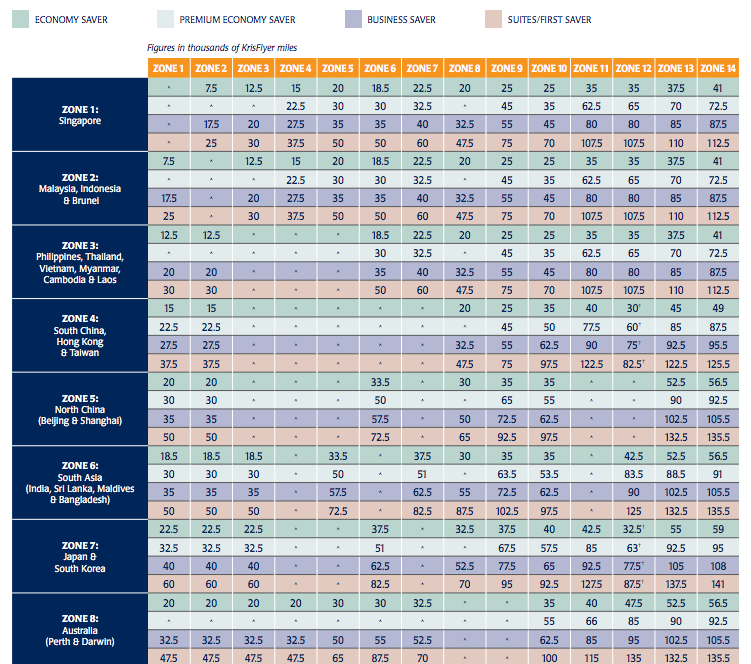
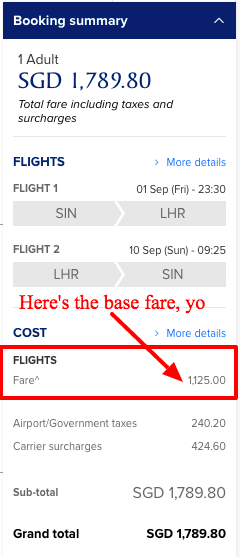
Woot that’s awesome. The miles game is a little project I have started becoming interested again this year. The last I had flown on biz class was a few years back. Looking forward to your next post, and you most definitely have to post your Suites experience!
Looking forward to part 2, well done!